
The Blackland Prairie is a crescent-shaped swath of land extending from central Alabama into northeast Mississippi. Its fertile landscape is dotted with farms, cattle ranches, and the occasional commercial or industrial complex. In the nineteenth and twentieth centuries, the region was one of the United States' major cotton producers. However, centuries before, it was a vast grassland and home to the Chickasaw Nation, whose heartland was centered around the modern-day city of Tupelo, Mississippi.
Today, a scattering of archaeological sites in the region, including ancient villages, burials, and battlefields, attest to the Chickasaw presence in the Blackland Prairie, but there are no longer any Chickasaw there. The tribe was forcibly removed from its homeland in 1837 and resettled 500 miles away in what is now Oklahoma. Recently, the Chickasaw have partnered with archaeologists from a number of academic institutions in an effort to identify heritage sites in their native Mississippi. "Preserving and reconnecting with our historical cultural heritage is critical for the continuance of a strong Chickasaw cultural identity," says Brad Lieb, the Chickasaw Nation's director of Chickasaw archaeology.
Denne historien er fra May/June 2023-utgaven av Archaeology.
Start din 7-dagers gratis prøveperiode på Magzter GOLD for å få tilgang til tusenvis av utvalgte premiumhistorier og 9000+ magasiner og aviser.
Allerede abonnent ? Logg på
Denne historien er fra May/June 2023-utgaven av Archaeology.
Start din 7-dagers gratis prøveperiode på Magzter GOLD for å få tilgang til tusenvis av utvalgte premiumhistorier og 9000+ magasiner og aviser.
Allerede abonnent? Logg på

ORIGINS OF PERUVIAN RELIGION
While investigating looters' holes at the site of La Otra Banda in northern Peru's Zaña Valley, archaeologist Luis A. Muro Ynoñán of the Field Museum and the Pontifical Catholic University of Peru spotted carved blocks around seven feet below the surface.

ISLAND OF FREEDOM
Many of the enslaved Africans sent to Brazil beginning in 1549 were from what is now Angola, where one of the most widely spoken languages was Kimbundu.
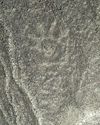
NAZCA GHOST GLYPHS
From the 1940s to the early 2000s, geoglyphs were discovered in the Nazca Desert of southern Peru depicting animals, humans, and other figures at the rate of 1.5 per year.

COLONIAL COMPANIONS
The ancestry of dogs in seventeenth-century Jamestown offers a window into social dynamics between Indigenous people and early colonists.
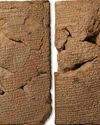
BAD MOON RISING
The British Museum houses around 130,000 clay tablets from ancient Mesopotamia written in cuneiform script between 3200 B.C. and the first century A.D.
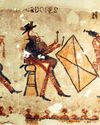
DANCING DAYS OF THE MAYA
In the mountains of Guatemala, murals depict elaborate performances combining Catholic and Indigenous traditions
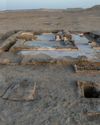
LOST GREEK TRAGEDIES REVIVED
How a scholar discovered passages from a great Athenian playwright on a discarded papyrus

Medieval England's Coveted Cargo
Archaeologists dive on a ship laden with marble bound for the kingdom's grandest cathedrals

Unearthing a Forgotten Roman Town
A stretch of Italian farmland concealed one of the small cities that powered the empire
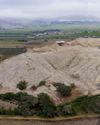
TOP 10 DISCOVERIES OF 2024
ARCHAEOLOGY magazine reveals the year's most exciting finds